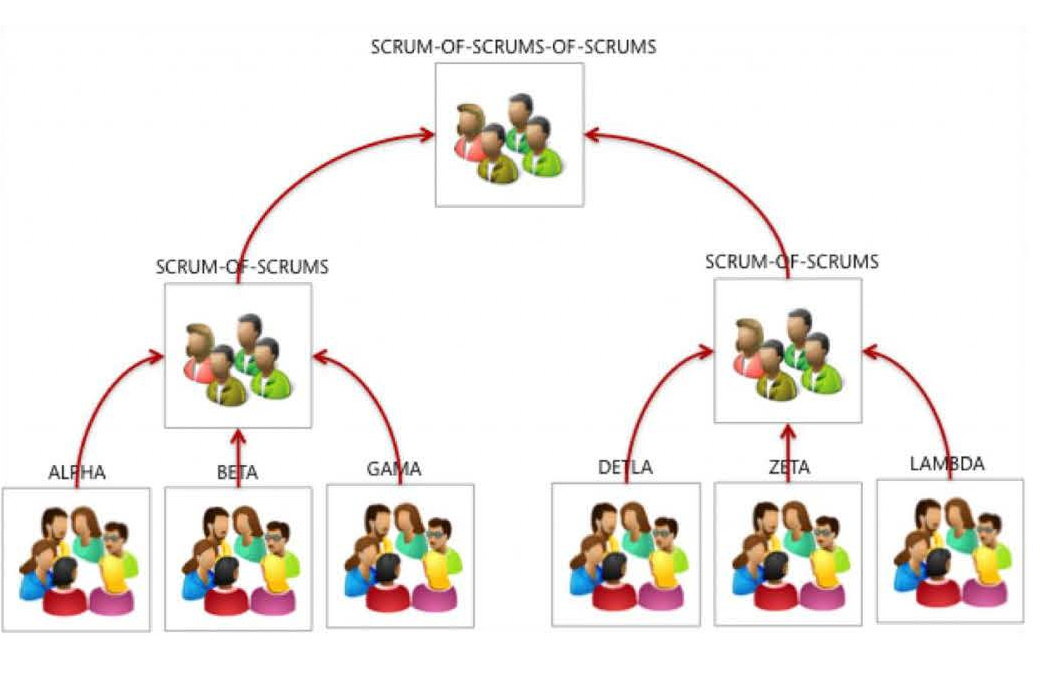Table of Contents
Introduction
Many companies are currently immersed in the implementation and use of agile methodologies. And many others have been using these methodologies in all their teams for years.
But it is also known that the more popular the use of agile methodologies is, the more new needs arise in their exploitation. A very clear case of the previous statement is when several teams collaborate on the same product. This article presents the solution that SCRUM provided for this case and one of the most popular frameworks to address it.
Scrum@Scale
Have you heard of Scaled Scrum?
In companies that have their own products, it is very common to see that, although they are divided into departments or teams responsible for different technical areas, they all contribute their grain of sand to the final product.
What common problems do we find when we have this situation?
Problems associated with dependencies between teams, duplication of work and lack of communication in general, which results in the speed and quality of the product running, decreasing over time.
The answer to these problems has been Scrum@Scale, which helps the organisation to focus multiple scrum teams on prioritised objectives.
The Scrum of Scrum (SoS) team has the following characteristics:
- Neither the PO nor the SM can be the team representatives.
- It is not necessary that the same representatives are always present
- They take place after the daily meeting of each team
- Neither sprint planning nor backlog reviews are performed.
- Objective: To coordinate, synchronise activities and detect dependen

Next, we will provide a link to a guide about Scrum@Scale. In it you will find its definition, framework components, role responsibilities, rules, etc.
Nexus
If we have already mastered the concepts of Scaled Scrum for working with large teams collaborating together on a single product, then it is time to learn about a framework for such teams, called NEXUS.
Nexus is a framework consisting of roles, events, artefacts and techniques that link and interweave the work of approximately three to nine Scrum teams working on a single Product Stack to build an Integrated Increment that meets a goal. Nexus is consistent with Scrum and its parts will be familiar to those who have used Scrum. The difference is that greater attention is paid to dependencies and interoperation between Scrum Teams that deliver at least one “Done” Integrated Increment in each Sprint. To learn more about the Nexus framework, here is a link.
Liberating Structures
If we have already learned to work with interconnected or scaled Scrum teams, it is becoming urgent to master and know other methods that facilitate and improve the way of relating, as well as strengthening trust between teams and within the same team. Liberating Structures are very useful for this purpose.
What are Liberating Structures?
Liberating Structures (LS) are simple-to-learn methods of interaction that improve team relationships and trust. They promote the active participation of groups of any size, making it truly possible to unleash the potential of all.
Five conventional structures guide the way we organise routine interactions and how groups work together. The problematic conventional structures in which people collaborate on a daily basis unintentionally suppress the participation and engagement of those involved.
Liberating structures add 33 more options to the big five conventional approaches.
The main benefits of using LS are:
- Creating effective meetings
- Developing synergies
- Resolving dysfunctions
- Freeing from “political games”
- Developing strategies
- Brainstorming ideas
- Increasing innovation
- Valuing people
- Among many other benefits
To learn more about Liberating Structures, please click here.
Conclusions
This article aimed to introduce the reader to the world of Agile with large teams or multiple teams working together. And to facilitate this situation, it also shows the ideal framework for this, as well as a set of techniques to get a better result from people working together.
Author
-

I am a Computer Engineer by training, with more than 20 years of experience working in the IT sector, specifically in the entire life cycle of a software, acquired in national and multinational companies, from different sectors.
View all posts









